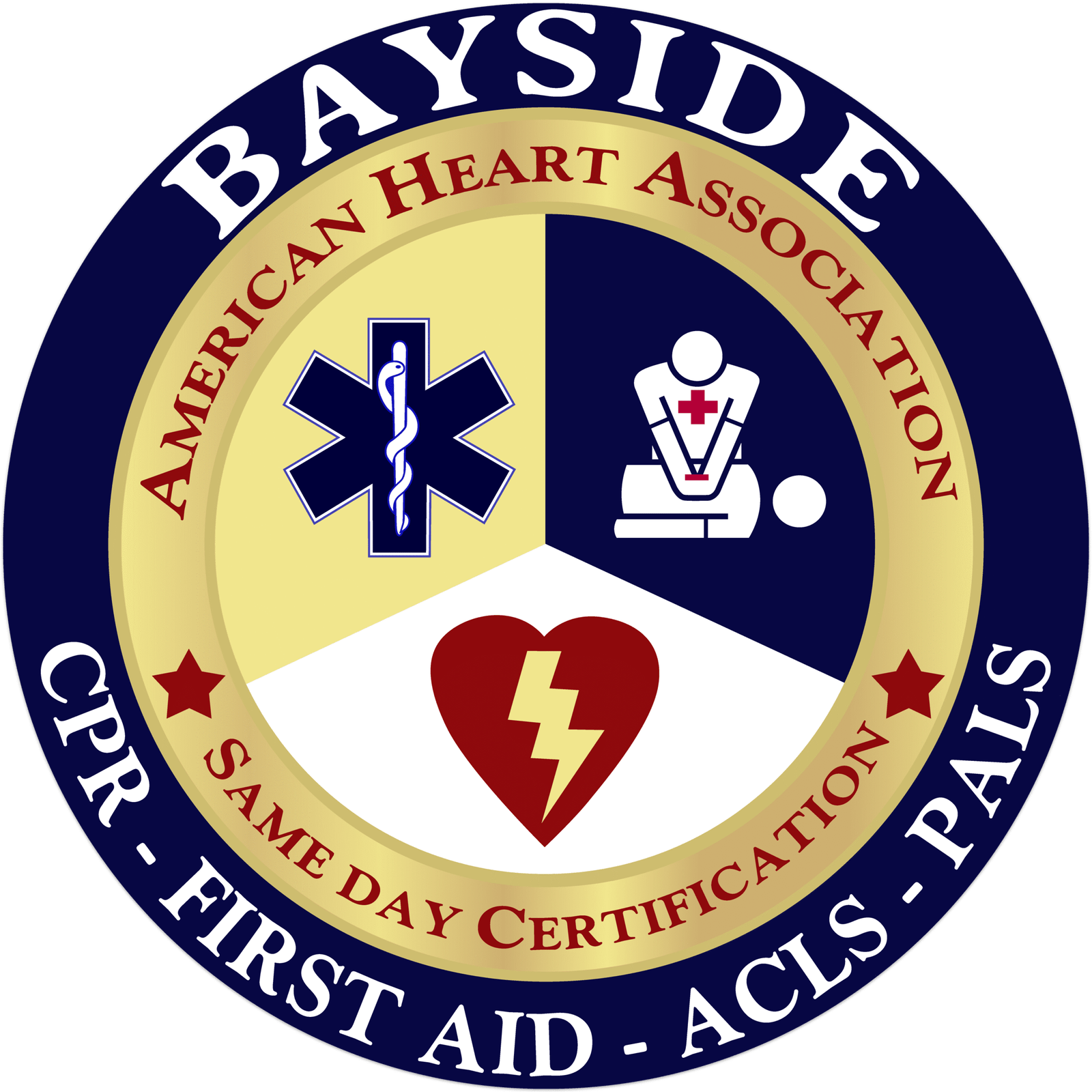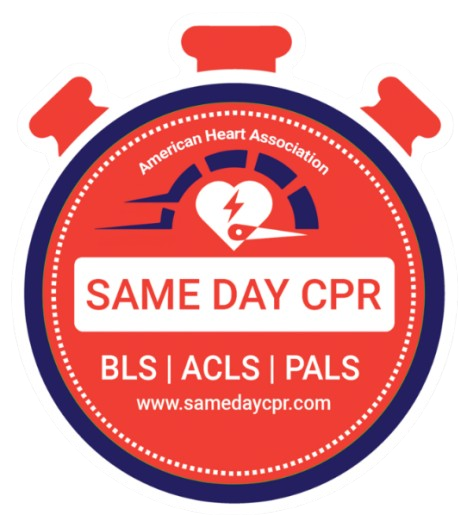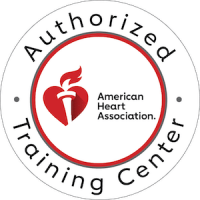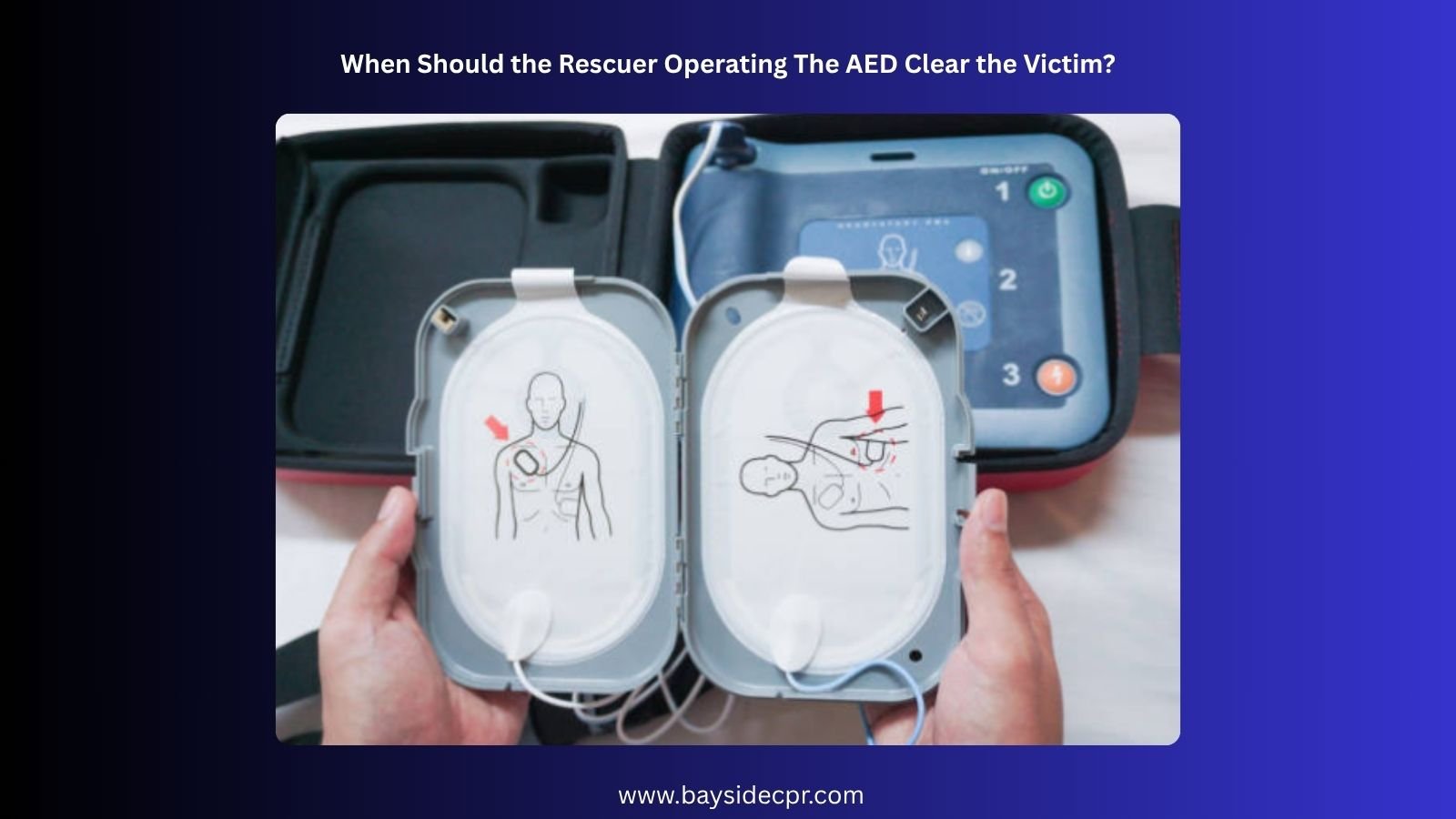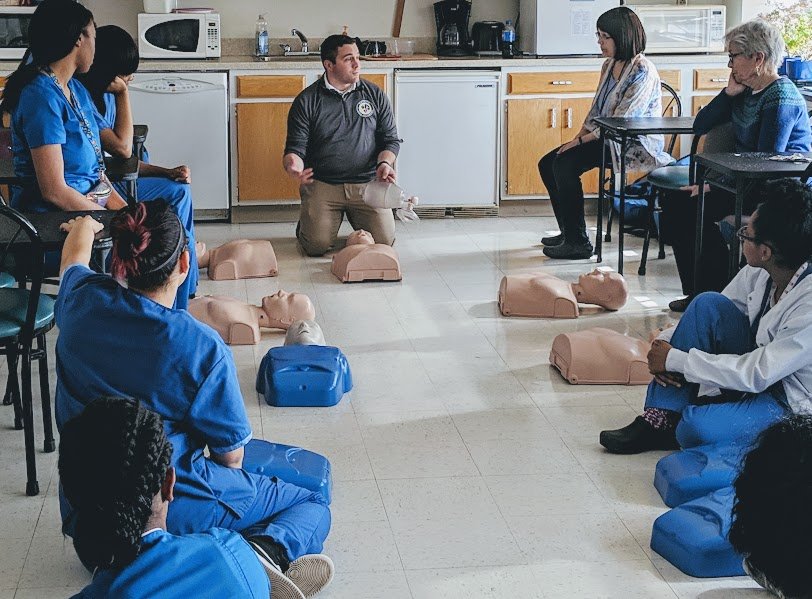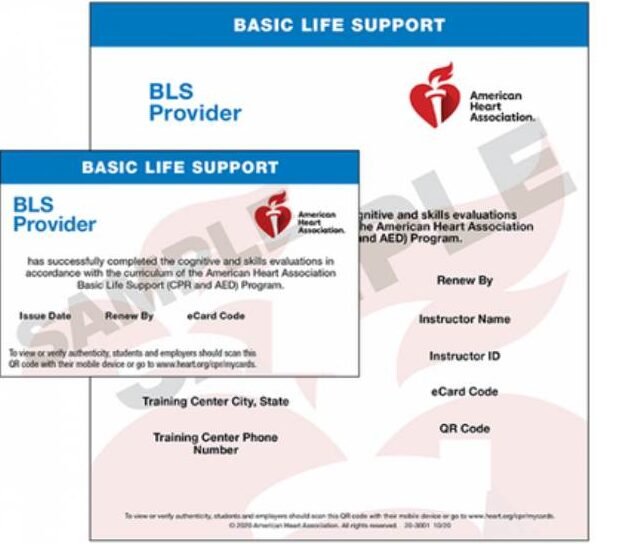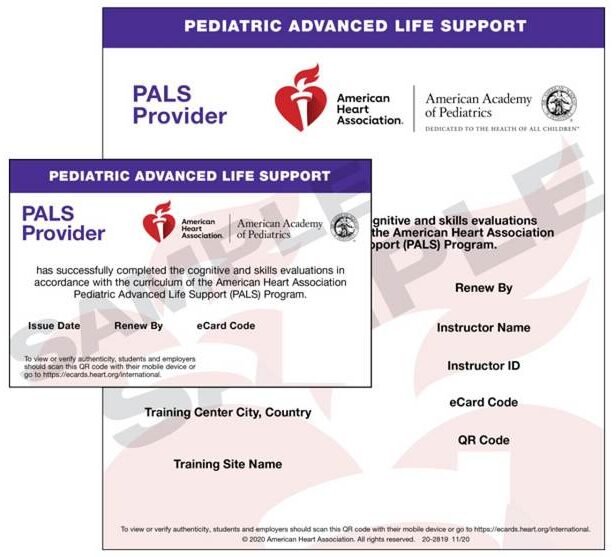Have you ever wondered why it’s so important for a rescuer to clear the victim before using an AED? When someone’s heart suddenly stops beating normally, every second counts, and the rescuer plays a key role in making sure the shock from the AED is both safe and effective. Clearing the victim means making sure no one is touching them so the device can deliver the lifesaving shock without any interruptions or risks. AEDs are amazing tools that anyone can use during serious emergencies like sudden cardiac arrest (SCA) or cardiac arrest, and knowing when to clear the person helps protect everyone involved while giving the best chance to bring the heart back to a normal rhythm.
What does Clear the Victim Mean?
When someone says “clear the victim” while using an AED, it means everyone should step back and stay still for a moment. The rescuer needs to make sure no one is touching the victim who is getting the shock. This is very important while the AED is analyzing and learning more about what you should do during AED analysis to ensure safety and effectiveness. If anyone is touching the victim when the AED delivers the shock, it could harm them or interfere with the treatment. Clearing the victim simply means removing all contact so the shock can do its job safely and effectively. It’s a quick step, but it can make a big difference in helping the person recover safely.
When to Clear The Victim?
Knowing when to clear the victim while using an AED is very important and can make a big difference in saving their life. Let’s go through the key moments when it’s necessary to clear the person to ensure the rescue is safe and effective.
1. Clear the Victim Before Analysis
You should clear the victim before the AED analyzes their heart. This means you need to step back and make sure no one is touching the person. The reason for this is to prevent any movement or noise from disturbing the AED’s reading. When everyone is clear, the AED can get an accurate picture of the victim’s heart rhythm to decide if a shock is needed. Clearing the area helps keep both the rescue effort safe and effective.
2. Clear the Victim Before Delivering Shock
You need to clear the victim before delivering a shock to make sure no one is touching them. This step is important because if someone is in contact with the person, they could also get hurt by the shock, or it might not work properly. Clearing the area helps ensure the shock is safely delivered to the heart, giving the person the best chance to recover. It’s a quick but important step to keep everyone safe during the rescue.
3. Clear the Victim After Delivering the Shock
After delivering the shock, it is important to clear the victim again and keep everyone at a safe distance. This helps prevent anyone from accidentally getting shocked if the AED detects another problem or if the heart rhythm changes. Clearing the area also allows the AED to check if the shock was successful and if further help is needed. Taking this quick step keeps everyone safe and makes sure the rescue continues smoothly.
4. Clear the Victim In the Presence Of Multiple Rescuers
When multiple rescuers are helping, it’s still important to clear the victim before analyzing or delivering a shock, even if others are nearby. Clearing the area ensures that no one unintentionally touches the victim and that the AED gets a clear reading. It also helps everyone stay safe by preventing accidental shocks. Working together and clearing the victim at the right moments makes the rescue safer and more effective for everyone involved.
Why Is Clearing The Victim Important?
Clearing the victim is important to make sure no one else is near and safe from the shock. It also helps the AED get a clear reading of the heart so it can deliver the right treatment.
1. Safety
Making sure everyone stands clear before the AED gives a shock is key to keeping everyone safe. The device sends out a strong electrical pulse, and if someone is touching the person at that moment, they could get shocked too. That’s why you’ll often hear, “Clear!” before pressing the button. It’s a simple step, but it protects the rescuers and bystanders while allowing the AED to work properly. Safety always comes first in an emergency, and a few seconds to double-check can prevent someone else from getting hurt.
2. Accurate Analysis
Giving the AED a clear space helps it check the heart rhythm without interference. If someone is touching the person, even just a little, the device might pick up that movement and get confused. This can lead to a delay or a wrong decision about whether a shock is needed. Letting the AED do its job without any outside contact makes sure it reads the heart correctly and chooses the right action. A quiet moment with no movement helps the device give the most accurate results.
3. Effective Shock Delivery
When using an AED, it’s super important to make sure no one is touching the person before pressing the shock button. This helps the device send the electric shock straight to the heart without any interference. If someone is still in contact with the victim, the shock might not work properly, and it could even hurt the person helping. Stepping back and staying clear lets the AED do its job right, giving the heart the best chance to start beating normally again. A quick “stand clear” reminder to everyone nearby can make a difference in saving a life.
4. CPR Effectiveness
Staying clear during AED use also helps keep CPR effective. After the shock is delivered, chest compressions need to start right away to keep blood flowing to the brain and other vital organs. If people are crowding around or touching the victim, it slows things down and causes confusion. By giving space and staying alert, rescuers can smoothly switch from shocking to compressions without delay. This quick response keeps everything moving and gives the person a better chance of recovery. To learn more about keeping things running smoothly, check out what is recommended to minimize interruptions in compressions when using an AED.
How to Properly Clear The Victim?
Before the AED delivers a shock, it’s important to make sure everyone knows to stay back for safety. Here’s a simple way to clear the person properly and help the device work best.
Step 1: Stop CPR and Move Away: First, gently stop giving chest compressions and take a step back. This gives everyone space and prevents accidental contact before the shock.
Step 2: Announce “Clear”!: Next, loudly say “Clear” so everyone knows to stay away from the person. This helps make sure no one is touching them when the shock is about to happen.
Step 3: Visually Check the Victim: Then, quickly look to make sure no one is touching the person and that everyone is standing clear. This simple check keeps everyone safe and ready for the shock.
Step 4: Deliver the Shock: Finally, press the shock button on the AED to deliver the electric pulse.
To understand how both steps work hand in hand, check out our guide on CPR and AED: When and how to use them together.
What Are The Common Mistakes To Avoid?
Using an AED can be lifesaving, but it’s easy to make mistakes that slow things down or cause problems. Knowing what to watch out for helps you act quickly and keep everyone safe.
1. Clearing the Victim Too Late
One common mistake is waiting too long to clear the person before the shock. If someone is still touching them when the AED is about to deliver the electric pulse, it can cause the shock to be less effective or even unsafe. This delay might also confuse others around and slow down the whole process. Moving away quickly and announcing clearly helps everyone stay safe and gives the device the best chance to restart the heart. Being prompt with clearing the person makes a big difference in how well the AED works.
2. Not Conforming That No One Is Touching Victim
Another mistake is not double-checking that no one is in contact with the person before pressing the shock button. In a stressful moment, it’s easy to assume everyone heard the warning, but someone might still be touching the victim without realizing it. A quick look around helps confirm that it’s truly safe to deliver the shock. Taking just a second to be sure can protect others and make the AED work the way it should. It’s a small step that matters.
3. Assuming the AED Will Detect the Problem Without Any Issues
It’s also a mistake to think the AED will always work perfectly without any problems. While these devices are smart and helpful, they still rely on how well the pads are placed and whether the person’s chest is dry and clear. If something isn’t right, like poor pad contact or too much movement, the AED might not read the heart rhythm correctly. That’s why it’s important to follow the voice prompts closely and check everything is set up the way it should be. A little extra care can make a big difference in how well the AED does its job.
How To Maximize AED Success Rate?
To give someone the best chance of survival, it’s important to act fast and use the AED the right way. Regular practice, good pad placement, clear communication, and making sure the device is always ready can all help it work better when every second counts.
1. Regular Training and Practice
Getting regular practice with an AED helps you feel more confident and ready during a real emergency. When you know how the device works and what steps to follow, you’re less likely to panic or make mistakes. Training also teaches you how to stay calm, listen to the voice prompts, and act quickly when every second matters. The more familiar you are with using an AED, the smoother everything goes when it’s time to help someone. A little practice really can save a life.
2. Proper Pad Placement
Placing the AED pads correctly is key to making sure the shock reaches the heart the way it should. One pad goes on the upper right side of the chest, and the other goes on the lower left side, just below the armpit. If the pads are too far off or not sticking well, the device might not work properly. Taking a moment to follow the pictures on the pads can help you get it right, even if you’re feeling nervous. Good placement gives the AED the best chance to do its job.
3. Immediate Response and Clear Communication
Responding quickly and speaking clearly can make a huge difference when using an AED. Every second counts, so starting CPR, grabbing the device, and calling out instructions right away helps keep things moving. When everyone knows what’s happening and what to do, it cuts down on confusion and saves time. Simple phrases like “Call for help,” “Start compressions,” or “Clear!” guide others and keep the team focused. Clear, calm direction helps the AED do its part and gives the person the best chance of survival.
4. Maintaining AED Readiness and Battery Life
Keeping the AED in good working condition is just as important as knowing how to use it. Make sure the battery is charged, the pads haven’t expired, and the device is stored in a spot that’s easy to reach. Many AEDs have a small light or screen that shows if everything is working, so check it often. A quick look now and then can help you catch any issues before an emergency happens. When the AED is ready to go, you can focus on helping someone without any delays.
Proper AED Clearing During Resuscitation: Critical Timing and Best Practices
In summary, when it comes to using an AED, knowing when to clear the victim is one of the most important steps you can take to help save a life. It’s not just about pressing a button; it’s about making sure everyone stays safe and the device works the way it’s meant to. By stepping back, checking your surroundings, and clearly saying “Clear,” you’re helping the AED do its job while protecting those around you. These simple actions can make a big difference during a stressful moment. With a little training and some practice, you’ll feel more prepared to take action when it matters most. Remember, every second counts, and so does every step you take.
